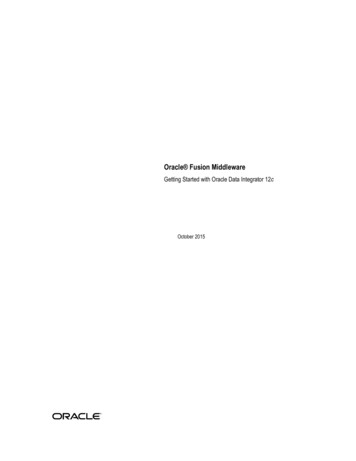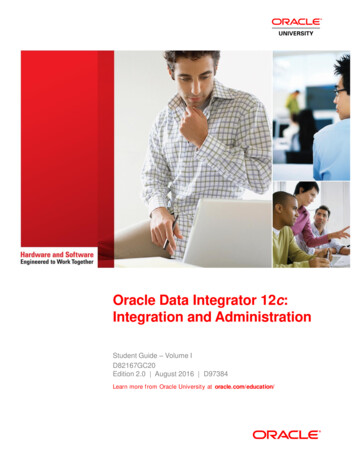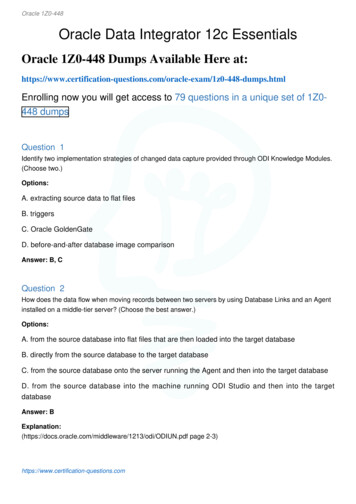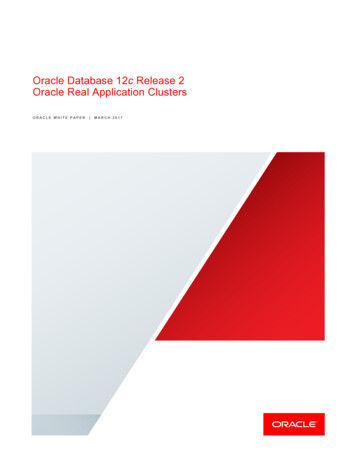
Transcription
Oracle Database 12c Release 2Oracle Real Application ClustersORACLE WHITE PAPER MARCH 2017
Executive Overview1Oracle Real Application Clusters – Overview2Oracle RAC Family of Solutions2New in Oracle Clusterware 12c Release 23New in Oracle ASM 12c Release 24Autonomous Health Framework (AHF)5Better Scalability6Improved Algorithms7Service Oriented Buffer Cache7Pluggable Database and Service Isolation8Better AvailabilitySmart Reconfiguration99Recovery Buddy9Oracle Read mostly instances on Reader Nodes9Node WeightingApplication ContinuityEfficient Management of a Pool of Clusters101011Oracle Rapid Home Provisioning11Oracle Autonomous Health Framework11ConclusionORACLE REAL APPLICATION CLUSTERS 12C RELEASE 2 – TECHNICAL OVERVIEW13
Executive OverviewOracle Real Application Clusters (RAC) continues to be the premium solution utilized by Customers to provide HighAvailability and Scalability to the Oracle Database. There is simply no other solution in the market that combines all thefeatures that Oracle RAC provides without requiring any changes to the application. The latest release of Oracle RACimproves these features and provides significant enhancements in all of the areas that matter the most to yourbusiness.Originally focused on providing best of class database services, Oracle RAC has evolved over the years and nowprovides a comprehensive High Availability (HA) stack that can be used in Public, Private or Hybrid Clouds to ensureHigh Availability, Scalability, Flexibility and Agility for any application.Availability and scalability requirements of Oracle Databases have become more stringent in recent years. Companiescan simply not afford any downtime to their databases and applications. The Oracle RAC Family of Solutions provide afine tuned product bundle to ensure the availability and scalability requirements of databases and applications are met.Oracle Real Application Clusters 12c Release 2 continues to improve these features with massive engineeringresources dedicated to make use of the latest hardware innovations and industry trends like cloud computing andMachine learning.These features can be broadly classified as, features that provide» Better Scalability» Better Availability» More Efficiency and Management of a pool of ClustersOracle Real Application Clusters 12c Release 2 – Technical Overview1
Oracle Real Application Clusters – OverviewOracle Database with the Oracle Real Application Clusters (RAC) option allows multiple instances running on different servers toaccess the same physical database stored on shared Storage. The database spans multiple hardware systems and yet appears as asingle unified database to the application. This enables the utilization of commodity hardware to reduce total cost of ownership and toprovide a scalable computing environment that supports various application workloads. If additional computing capacity is needed,customers can add additional nodes instead of replacing their existing servers. The only requirement is that servers in the cluster mustrun the same operating system and the same version of Oracle. They do not have to be of the same capacity. This saves on capitalexpenditure as this allows customers to buy servers with latest CPU and memory and use it alongside existing servers. Thisarchitecture also provides high availability as RAC instances running on different nodes provides protection from a node failure. It isimportant to note that (almost) all applications including Oracle Applications, Peoplesoft, Seibel, SAP etc run without any changes onOracle RAC database.Customer’s requirement for database availability and scalability continue to increase. They cannot afford any downtime in theirenvironments. These requirements are not isolated to just databases but include other critical components like servers, network, clientconnections etc. Furthermore, there is a need for an intelligent resource manager that is able to redirect incoming workloadsdynamically to nodes which are idle or in some cases more capable in terms of computing power and memory.The Oracle RAC Family of Solutions provides a fine tuned product bundle to ensure all these requirements are met. The Oracle RACstack is comprised of the following components which are referred to as “Oracle RAC Family of Solutions”.Oracle RAC Family of SolutionsFigure 1: Oracle Family of SolutionsOracle Real Application Clusters 12c Release 2 – Technical Overview2
The functionality provided by Oracle RAC Family of Solutions can be used by licensed Oracle RAC or Oracle RAC One Nodecustomers without any additional charge.Oracle ClusterwareOracle Clusterware is a technology that transforms a server farm into a cluster. Oracle Clusterware provides among other things nodemembership, node fencing and optimal resource placement functionality. Oracle Clusterware is a complete, free-of-charge clusteringsolution that can be used with Oracle RAC, RAC One Node and even Single Instance Oracle databases.New in Oracle Clusterware 12c Release 2Oracle Clusterware 12c Release 2 introduces new deployment options for easier management of large deployments of clusters. Thisnew architecture is called Oracle Cluster Domain. Using a Cluster Domain deployment would free individual clusters to dedicate all itsresources to the database or application while management tasks like deployment, storage management, performance monitoring etc isdelegated to the Domain Services Cluster.Figure 2: Oracle Cluster DomainAs shown in figure 2, a Cluster Domain consists of a Domain Services Cluster (DSC) and one or many member clusters. A DomainServices Cluster (DSC) offers services to the member clusters. Member clusters are the clusters on which databases or applicationsare deployed. There can be four types of member clusters. (1) Database member cluster(s) with high performance storage local to thatmember cluster, (2) Application member cluster(s) typically hosting applications without shared storage, (3) Database membercluster(s) accessing ASM storage on the DSC via ASM I/O Service and (4) Database member cluster(s) accessing ASM storage on theDSC directly via SAN storage. All the member clusters utilize the centralized Management Repository services, Trace File Analyzerservices and other services provided by the Domain Services ClusterNote that Oracle Clusterware 12c Release 2 can also be deployed as Standalone Cluster as in previous releases.Oracle Real Application Clusters 12c Release 2 – Technical Overview3
Choosing a deployment modelThe choice of deployment depends on the installation type. New installations can choose between Cluster Domain based deploymentmodel or Standalone Cluster deployment model. Upgrades from previous releases will continue to remain standalone as thedeployment model is not changed during upgrades. Oracle Clusterware licensing remains the same for both deployment models. Someaspects to consider when choosing a deployment model are:» Cluster Domain architecture delegates the management aspects of Member Clusters to the Domain Services Cluster. This optimizesthe Member Cluster management in terms of both provisioning and performance management. Resources like CPU on the MemberCluster can now be dedicated to the database computing needs» Cluster Domain architecture provides a unified consolidated storage solution via the Domain Services Cluster (DSC). This modelmakes it easier to provision new databases using the Oracle ASM cloning feature. Storage consolidation using the DSC deploymentmodel benefits vastly from the new Database oriented storage management features introduced in Oracle ASM 12c Release 2» Centralized data collection facilities provided by Autonomous Health Framework (AHF) in the DSC allow the Member Clusters’behavior to be analyzed using Machine learning capabilities used by AHF which continuously monitors the Member Clusters. Thisfunctionality can in many cases prevent a problem before it occurs. For example, AHF can detect anomalies between real timeperformance counters and expected values to notify system admin of impending performance issues while generating targeteddiagnosis and corrective actions.For more information about Oracle Clusterware, see www.oracle.com/goto/clusterwareOracle Automatic Storage Management (ASM)Oracle Automatic Storage Management (ASM) is the recommended volume manager which can be used for both, Oracle RAC andSingle Instance Oracle Databases. Oracle ASM simplifies storage management through the principle of “stripe and mirror everything”(SAME). Intelligent mirroring capabilities allow administrators to define 2- or 3-way mirrors to protect vital data. When a read operationidentifies a corrupt block on a disk, Oracle ASM automatically relocates the valid block from the mirrored copy to an uncorrupted portionof the disk.New in Oracle ASM 12c Release 2Oracle ASM 12c Release 2 introduces database-oriented storage management via the new ASM Flex Disk Group. An ASM Flex DiskGroup provides enhanced management capabilities like (a) modifiable redundancy at individual database file level via File Groups (b)snapshot capabilities and (c) quota management at the database level for consolidated environments.The ability to create snapshots without relying on the snapshot capabilities of the underlying storage enables DBAs to rapidly provisiondatabases. ASM snapshots are executed at the database level without the need for downtime or any additional manual recovery steps.Modifiable redundancy allows database administrators to start with a conservative mirroring strategy and change the redundancy infuture depending on business needs. Quota management allows storage administrators to set quota at the database level which helpsin consolidation environments as it prevents one database from utilizing all the space in the Flex Disk Group.For more information about Oracle Automatic Storage Management, see http://www.oracle.com/goto/asmOracle ASM Cluster File System ACFSOracle ACFS complements ASM file management capabilities by providing a POSIX-compatible file system to store general purposeand database files. Oracle database has for a long time provided column types to store blobs, XMLs and text files etc. However due toapplication or business requirements, customers needed a file system to store such data. Obviously storing this data outside the Oracledatabase requires customers to manually plan for data management activities like backup, synchronization across sites etc.ACFS provides a Cluster file system which customers can use to store this data. They can additionally use ACFS features like Tagging,Replication and Snapshots to ease their data management activities. Customers can utilize ACFS tagging feature to add Tags to theirdata and retrieve tags using a command line or they can utilize Tagging API calls directly from their application. They can also useOracle Real Application Clusters 12c Release 2 – Technical Overview4
ACFS snapshot capabilities utilizing copy-on-write (COW) on generic systems without relying on specialized storage. This meanscustomers can take multiple snapshots while consuming minimal space. ACFS also provides replication facilities to replicate this data toother systems for site availability.For more information about Oracle ACFS, see http://www.oracle.com/goto/acfsRapid Home Provisioning (RHP)Oracle’s Rapid Home Provisioning (RHP) helps Oracle database administrators to rapidly and efficiently provision Oracle GridInfrastructure and Oracle Database(s). Rapid Home Provisioning (RHP) provides a centralized software deployment and maintenancefunctionality whereby software stored on the RHP server can be provisioned to any node or cluster.For more information about Oracle RHP, see www.oracle.com/goto/rhpAutonomous Health Framework (AHF)Oracle Autonomous Health Framework (AHF) presents the next generation of tools which autonomously work 24x7 to keep databasesystems healthy and running while minimizing human reaction time. AHF daemons continuously collect and analyze performance andconfiguration data from the operating system and the database. AHF applies Machine learning concepts in real time to the data toanticipate events like impending component failures or change in workloads. Based on the outcome of its analysis, AHF can eitherautomatically shift workload to another instance or notify the administrator about imminent failures that may require manual intervention.For more information about AHF, see www.oracle.com/goto/ahfSCANSingle Client Access Name (SCAN) introduced in Oracle Grid Infrastructure 11g Release 2, acts as a cluster alias for databases in thecluster. The benefit is that the client’s connect information does not need to change if nodes are added or removed from the cluster.With Oracle Grid Infrastructure 12c, SCAN has been enhanced to (a) support IPv6 based IP addresses to provide a choice of IPv4 orIPv6 based addresses as needed, (b) support multiple subnets in the cluster to segregate incoming clients into different networksubnets for fine grained management and (c) to restrict service registration to disallow arbitrary services that are not part of the RACcluster from registering with SCAN to route user sessions to malicious nodes thereby providing enhanced security.For information about SCAN, see rview/scan-129069.pdfDynamic Database ServicesSessions connect to an instance using services. The service itself can be configured to run on one or more instances. An instance canhost one or more services. Services allow breaking up workloads into manageable components providing more granularity. Forexample, OLTP users can be configured to use service(s) that redirect sessions to the Hub nodes, while DSS users can be configuredto use (an)other service(s) to redirect sessions to read only instances. Once the services are configured, sessions are automaticallyrouted to the appropriate node providing that service to ensure optimal use of resources without manual customer intervention.Connection Load BalancingClient-side “load balancing” balances connection requests across all SCAN listeners in the cluster by using the SCAN on the addresslist of the client connect string. SQL*NET will randomly select one of the SCAN IP addresses.Server-side load balancing is achieved using the SCAN listener. Each SCAN listener is aware of all instances in the cluster providingeach service. Based on the goal defined for the service, the listener chooses the instance that will best meet the goal and theconnection is routed to that instance through the local listener.Oracle Real Application Clusters 12c Release 2 – Technical Overview5
Load Balancing AdvisoryLoad balancing distributes work across all of the available Oracle RAC database instances. Oracle recommends that applications useconnection pools with persistent connections that span the instances that offer a particular service. When using persistent connections,connections are created infrequently and exist for a long duration. Work comes into the system with high frequency, borrows theseconnections, and exists for a relatively short duration. Load Balancing Advisory directs incoming user connections to the instances thatwill provide the optimal quality of service for that work. This minimizes the need to relocate the work later.All the above components work cohesively to reroute work to provide the best service times globally, and more importantly work is rerouted gracefully depending on changing system conditions.Better ScalabilityThe volume of data that customers have to manage is growing at a phenomenal rate. Businesses continue to face the uphill task tocapture and analyze the data to react better to day-to-day operational or long term business events. Processing these large datavolumes requires serious computing power. Oracle RAC is perfectly suited for such tasks as customers can start with a smaller footprintand scale out horizontally as needed.figure 3 shows the result of SAP sales and distribution (SD) module benchmark with Oracle RAC, which shows how SD users increaseas Oracle Instances are added to the system.Figure 3: Scalability without Application Code changesOracle RAC provides all the availability and scalability features while providing ACID properties that most applications require.Customers who deploy their applications with Oracle RAC do not have to worry about stale reads. They can focus on adding businesslogic into their application while Oracle RAC database takes care of all their transactional needs. Moreover, they can utilize other OracleDatabase features along with Oracle RAC. For example, Oracle Data Guard can be used for Disaster recovery, Oracle In-memory DBfor Advanced Analytics, Oracle Multitenant for Consolidation etc can be used along with Oracle RAC with little or no additionalconfiguration changes. In fact, the benefits provided by these database features are further augmented when used with Oracle RAC.Oracle Real Application Clusters 12c Release 2 – Technical Overview6
Improved AlgorithmsOracle RAC scalability is a result of optimized algorithms that keep up with the changes in technology. Oracle Cache Fusion which is acomponent of Oracle Real Application Clusters is the magic that works behind the scenes to synchronize the cache of all the OracleRAC instances even when multiple users are running transactions that are actively updating these caches. There are absolutely nomanual steps required for this concurrency. Until recently, Oracle Cache Fusion solely utilized the private network to keep the cachesynchronized, as rotating disk performance has been traditionally slower. However, lately disk performance is improving as a result ofstorage vendors utilizing newer technologies like SSDs and NVME to reduce I/O latencies. So in certain circumstances, it may actuallybe beneficial to read blocks from disk rather than ship the block over the private network.Cache Fusion’s enhanced algorithm provides the best of both worlds. As shown in figure 4, Cache Fusion monitors the network andstorage I/O statistics on an ongoing basis and will utilize the more efficient path as needed. Note that this is done automatically and onan ongoing basis, without any manual intervention. These optimizations ensure that customers continue to benefit from Oracle RealApplication Clusters as their hardware changes without the need for manual environment specific adaptations.The complexity of the algorithms in Oracle RAC are abstracted from the Application and do not require any change in application code.Figure 4: Scalability without Application Code changesService Oriented Buffer CacheService Oriented Buffer Cache as introduced in Oracle RAC 12c Release 2 essentially reduces and in many cases eliminates “physicalreads” after a planned singleton service failover. Prior to this feature, singleton service failover affects response time as buffers thatwere cached on the failed instance have to be re-read from the disks incurring the overhead of physical reads. Starting with OracleRAC 12c Release 2, Cache Fusion maintains an in-memory hash that tracks the blocks in the buffer cache and the service name usedby the sessions to connect. Cache Fusion uses this hash in two ways:Oracle Real Application Clusters 12c Release 2 – Technical Overview7
(a) Resource Mastering optimization: Resource mastering of a resource cached in the buffer is only considered on the node where theservice that the session used to access the resource is running, This results in improved performance as it eliminates the need forsending additional messages on the private network for resource change operations.(b) Pre-Warm the Buffer Cache: During planned maintenance, when a singleton service is failed over, Cache Fusion will pre-warm thebuffer of the instance to which the service is going to failover. This reduces the physical reads that the sessions would have otherwiseincurred, resulting in consistent performance for those failed over sessions as shown in figure 5.Figure 5: Service Oriented Buffer CachePluggable Database and Service IsolationConsolidation helps customers to use available computing power more efficiently while reducing overall costs. Oracle provides varioussolutions for consolidation that can be used together or individually as per customer needs. The Oracle Multitenant option is one of suchoptions used by customers for consolidation. Consolidating databases without adequate planning for availability exposes customers todowntime as multiple databases running on one server results in that one server being a single point of failure. Oracle RAC can beused to seamlessly to provide high availability with Oracle Multitenant, as multiple Oracle RAC instances running on different nodeseliminate downtime on these consolidated environments caused by node failures. Additionally, customers benefit from the ServiceIsolation feature resulting in consistent performance achieved by reducing internal distributed lock manager (DLM) operations for“Pluggable Databases”/Services not offered in all instances and optimizing block operations based on in-memory block separation.Oracle Real Application Clusters 12c Release 2 – Technical Overview8
Better AvailabilityThe cost to business due to application or database downtime has increased over the years. This is further exacerbated in consolidatedenvironments as multiple applications and databases may be affected. Planning redundancy at multiple layers in the datacenter iscritical to achieving availability. Tasks like firmware patching and OS patching require planned downtime. It is essential that events likenodes leaving or joining the cluster are (a) least disruptive to the underlying database and (b) notify the user sessions connected to thenodes affected by the planned maintenance operation so that those sessions can gracefully reconnected to another node in the cluster.Smart ReconfigurationOracle RAC 12c Release 2 further reduces disruption from both planned and unplanned operations utilizing features like RecoveryBuddy and service Isolation up to 4 times faster than previous releases.Recovery BuddyRecovery buddy introduces the concept of a Buddy instance for every Oracle RAC instance.Figure 6: Recovery BuddyRecovery Buddy tracks block changes in a hash table in the SGA of the buddy instance. So if an instance is evicted, the changes madeby that instance are available in the SGA of its buddy instance. This optimization allows dramatically faster instance recover as thishash table is utilized instead of reading the redo log changes from disk. Recovery Buddy feature along with the optimized singletonworkload scaling results in almost four times performance improvement during reconfiguration.Oracle Read mostly instances on Reader NodesOracle Grid Infrastructure 12c introduced the concept of Oracle Flex cluster in which nodes can be classified as a Hub node or a Leafnode. In Oracle Grid Infrastructure12c Release 1, database instances could only be installed on Hub nodes and Leaf nodes were usedto host applications. Starting with Oracle Grid Infrastructure 12c Release 2, it is now possible to run read-only instances on Leaf nodes.This architecture vastly improves availability as database instances running on Hub nodes are not affected by the read only instanceson Leaf nodes joining or leaving the cluster. Customers can configure their OLTP services to connect to the instances running on Hubnodes while DSS or read sessions can be directed to the instances running on Leaf nodes.Oracle Real Application Clusters 12c Release 2 – Technical Overview9
As Leaf nodes joining or leaving the cluster does not affect overall database availability, customers can scale up and improve theperformance of DSS queries by adding additional read only instances running on Leaf nodes. Oracle Parallel Query slaves can beconfigured to run on these read only instances with additional memory to help improve typical parallel query activities like sorting orhash-joins. Additionally, instances running on Leaf nodes can be configured with the new “Local Temporary Tablespace”. ParallelQuery slaves running massive sorts or hash joins can utilize these new Local Temporary Tablespace” if they run out of physicalmemory and need to spill to disk. figure 7 shows a four node RAC instance with two Hub nodes and two Leaf nodes with servicesconfigured.Figure 7: Read only instances on Reader nodesNode WeightingPrior to Oracle RAC 12c Release 2, node eviction caused by a split brain did not consider customer workload and followed a pattern toevict the higher node number leaving the lowest node number in the cluster. While this was effective, it did not take into accountcriticality of workloads and secondary failures.Oracle RAC 12c Release 2 introduces Node Weighting feature which considers additional aspects like the criticality of the workloadrunning on the node, number of services running on the node and even secondary failures like public network failure to reach a moreinformed decision on the node to be evicted during a split brain that results in the cluster splitting into equal half’s.DBAs can optionally identify a node to be marked critical during configuration. The criticality attribute can be defined at the node level orat the service level using appropriate crsctl or srvctl commands. A node level definition can be used to mark a specific node that hassay more CPU or memory than other node while a service level definition can be used if that service is deemed more important thanother services running on the cluster.Application ContinuityApplication Continuity feature masks outages caused by nodes joining or leaving the cluster by replaying in-flight work for impacteddatabase sessions. In Oracle RAC 12c Release 2, Application Continuity is available for applications using Java, OCI and ODP.NETand is integrated with most Application Servers including WebLogic and Tomcat.For more information about Application Continuity, x.htmlOracle Real Application Clusters 12c Release 2 – Technical Overview10
Efficient Management of a Pool of ClustersThe volume of data that the customer has to manage is growing and newer trends like analytics, Internet of things (IoT) continues togenerate more and more data. Additionally, the need to mine data to improve various business services is becoming even more criticalto organizations. Databases and applications to manage these ever increasing data volumes require an efficient and scalabledeployment engine. Once deployed, these deployments need to be managed from both workload scheduling and performancemanagement aspect. Oracle RAC 12c Release 2 features Rapid Home Provisioning (RHP) and Autonomous Health Framework (AHF)help manage these deployments in a scaleable and efficient manner.Oracle Rapid Home ProvisioningOracle RHP provides an efficient and non-disruptive method to provision, patch and upgrade various layers of the Oracle softwareinfrastructure; these layers include but are not limited to Oracle Grid Infrastructure, Oracle Database (RAC, RAC One Node and SingleInstances), Applications and Middleware.RHP can be configured to easily provision, upgrade and patch Standalone clusters, Domain Services clusters and Member clusters asshown in figure 9. RHP itself can be provisioned in a standalone deployment model or as part of the new Cluster Domain deploymentmodel. RHP can help standardize customer software install by the use of gold images. Essentially customers can create anenvironment or site specific gold image which can then be used as the standard image to be deployed.Figure 8: Rapid Home ProvisioningOracle Autonomous Health FrameworkAdministrators are constantly overwhelmed with the increase in systems that need to be administered, monitored, managed and tunedand to keep them running efficiently within defined service level agreements (SLAs). Oracle Autonomous Health Framework (AHF) is acollection of next generation tools, which autonomously work together 24x7 to keep database systems healthy and running whileminimizing human reaction time. These components include both existing tools as components in ORAchk, Cluster Verification Utility,Trace File Analyzer, Cluster Health Monitor, Quality of Service Management, Memory Guard, and new components in Cluster HealthAdvisor and Hang Manager as shown belowOracle Real Application Clusters 12c Release 2 – Technical Overview11
Figure 9: Autonomous Health FrameworkOracle RAC 11g introduced services as a concept that provides administrators means to split workloads into manageable chunks thatcan be directed to run on different nodes of the cluster. For example, an OLTP service can be defined for all OLTP users and anAnalytics service can be defined for DSS workloads. In production systems, these workloads could be affected by runaway queries orhangs that may affect service level agreements of these services. Finding out the root cause of these runaway queries or hangs requiremanual intervention and is a function of System administrators and Database administrators reaction time. It is increasingly important to(a) find the issue quickly and (b) isolate the issue hopefully before it affects SLAs.Oracle Autonomous Health Framework components work together in daemon mode to address such issues with the intent to minimizeand reduce the impact of the reaction time on these systems. AHF components such as Cluster Verification Utility (CVU) and ORAchkprovide lightweight and non-intrusive health checks for the Oracle stack of software and hardware components including Oracle RACDatabases. It proactively scans for known issues and recommends resolutions.AHF components such as Cluster Health Monitor, Cluster Health Advisor, Hang Manager, Trace File Analyzer (TFA) and Quality ofService Manag
Oracle Database with the Oracle Real Application Clusters (RAC) option allows multiple instances running on different servers to access the same physical database stored on shared Storage. The database spans multiple hardware systems and yet appears as a File Size: 1MB
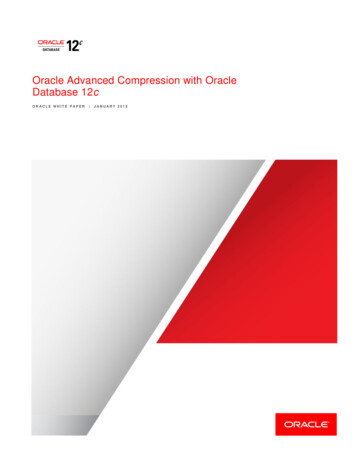


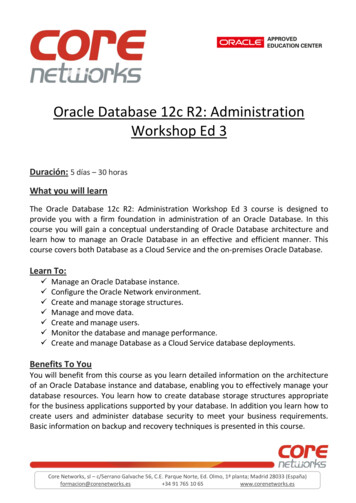
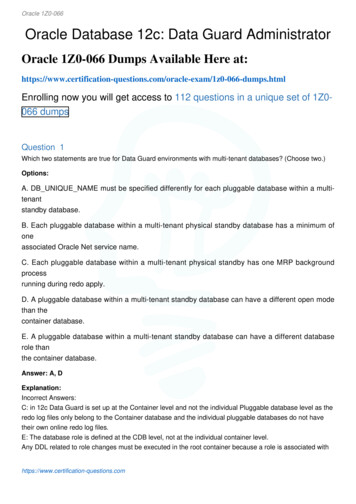
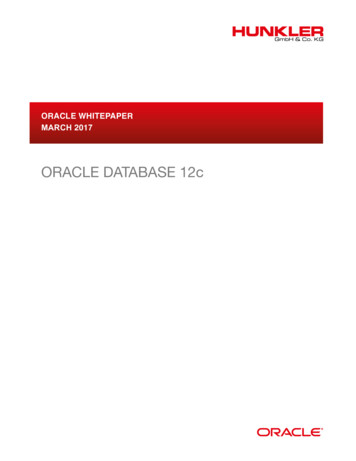
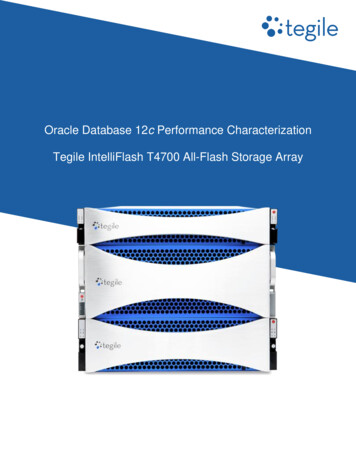
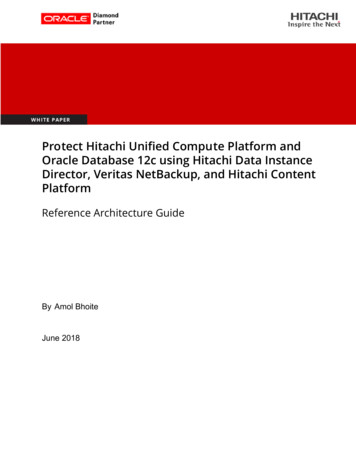
![[1]Oracle Data Integrator Studio Online Help 12c (12.2.1.1)](/img/5/odish.jpg)
